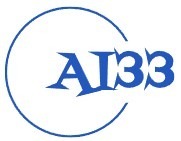Deep learning libraries are essential tools for developers and researchers working on artificial intelligence and machine learning projects. These libraries provide a range of functions and features to make it easier to build, train, and deploy deep learning models. With several options available in the market, it can be challenging to choose the right library for your specific needs. This article will compare some of the best deep learning libraries to help you make an informed decision.
TensorFlow
TensorFlow is one of the most popular deep learning libraries developed by Google. It offers a flexible and scalable platform for building and training deep neural networks. TensorFlow provides a high-level API for easy model building as well as a low-level API for advanced customization. With a large community of developers and resources, TensorFlow is a great choice for beginners and experts alike.
PyTorch
PyTorch is an open-source deep learning library developed by Facebook. It is known for its dynamic computational graph feature, which allows for easier debugging and model experimentation. PyTorch offers a more pythonic and flexible approach to deep learning compared to other libraries. With a growing community and extensive documentation, PyTorch is a popular choice for researchers and academics.
Keras
Keras is a high-level deep learning library that provides a user-friendly interface for building neural networks. It is built on top of TensorFlow and allows for rapid prototyping of deep learning models. Keras is known for its simplicity and ease of use, making it an excellent choice for beginners and those looking to quickly develop and test deep learning models.
Caffe
Caffe is a deep learning framework developed by Berkeley AI Research (BAIR). It is optimized for image recognition tasks and provides a fast and efficient platform for training convolutional neural networks. Caffe is popular in the computer vision community and is known for its speed and performance. If you are working on image-related projects, Caffe could be the right choice for you.
MXNet
MXNet is a deep learning framework developed by Apache Software Foundation. It is designed for efficiency and scalability, making it suitable for large-scale distributed training. MXNet provides both high-level APIs for rapid development and low-level APIs for advanced customization. With support for multiple programming languages and platforms, MXNet is a versatile library for deep learning projects.
Conclusion
Choosing the right deep learning library depends on your specific requirements and goals. If you are looking for a flexible and scalable platform, TensorFlow is a solid choice. PyTorch offers a more pythonic and dynamic approach to deep learning, making it ideal for researchers and academics. Keras is a user-friendly library for rapid prototyping and experimentation. Caffe is optimized for image recognition tasks, while MXNet is suitable for large-scale distributed training. Consider your project’s needs and preferences to determine which deep learning library is right for you.
FAQs
1. Which deep learning library is the best for beginners?
For beginners, Keras is a great choice due to its simplicity and ease of use.
2. Which deep learning library is preferred by researchers?
PyTorch is preferred by researchers for its dynamic computational graph feature and flexible approach to deep learning.
3. Which deep learning library is optimized for image recognition tasks?
Caffe is optimized for image recognition tasks and provides fast and efficient training for convolutional neural networks.
Quotes
“Deep learning libraries are like tools in a toolbox – each one has its own strengths and weaknesses. The key is to choose the right tool for the job.” – Unknown
#Deep #Learning #Library #Comparison #Options

